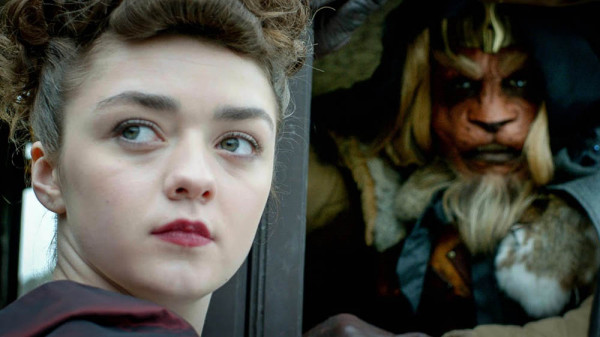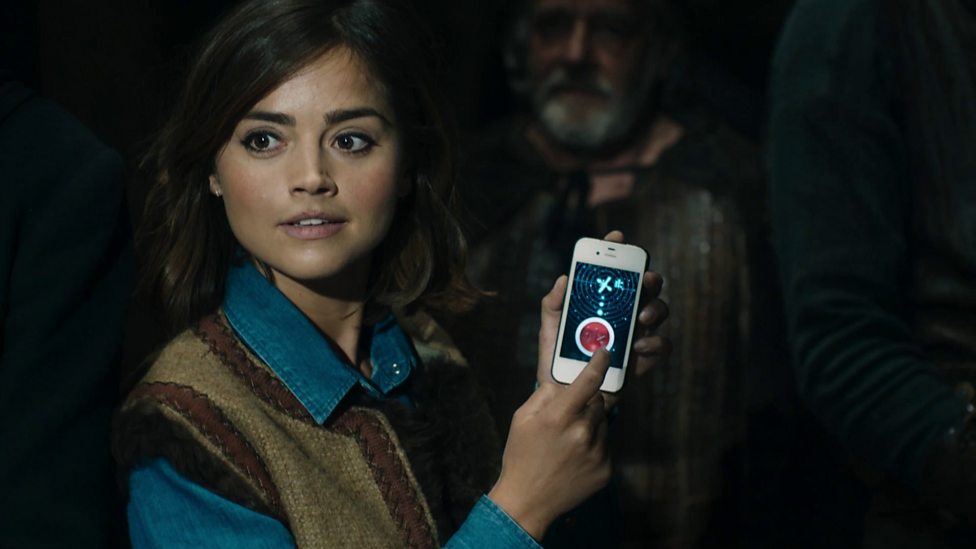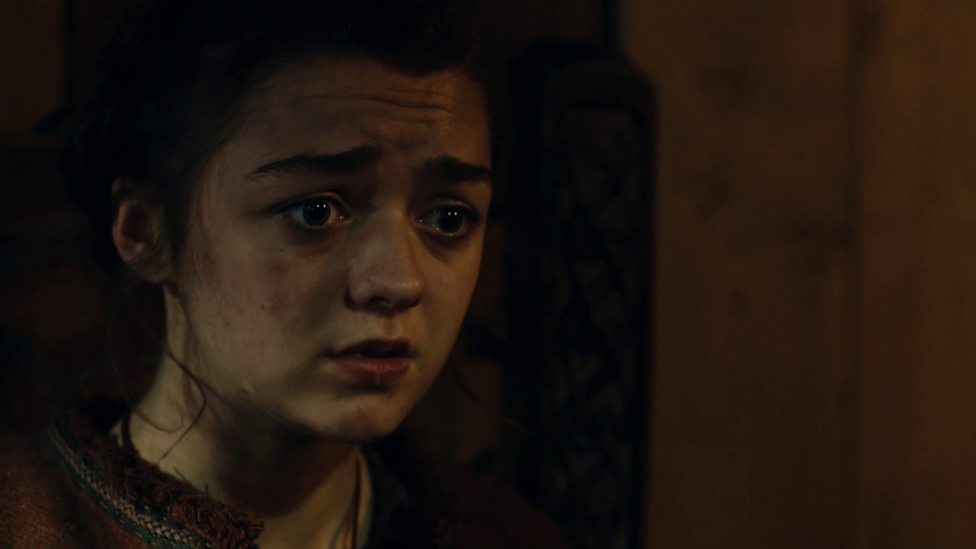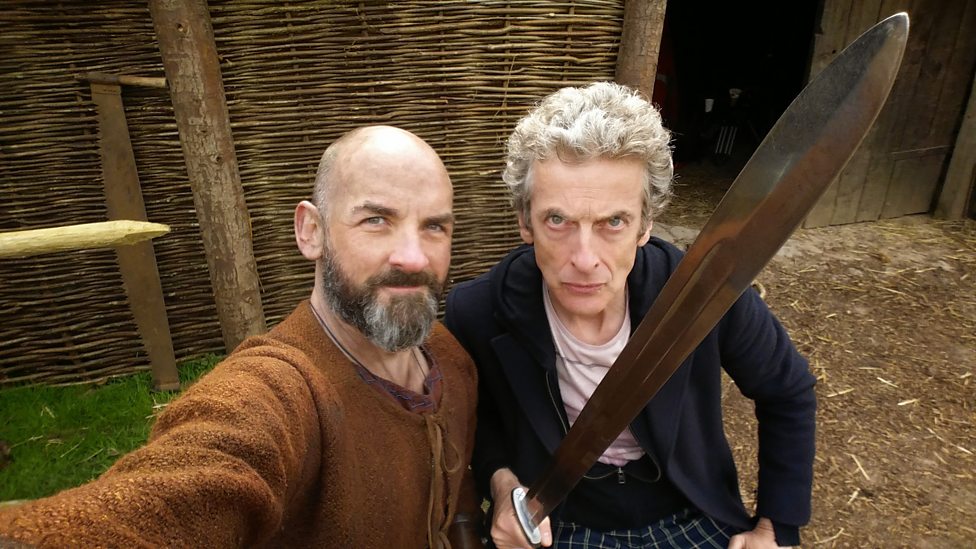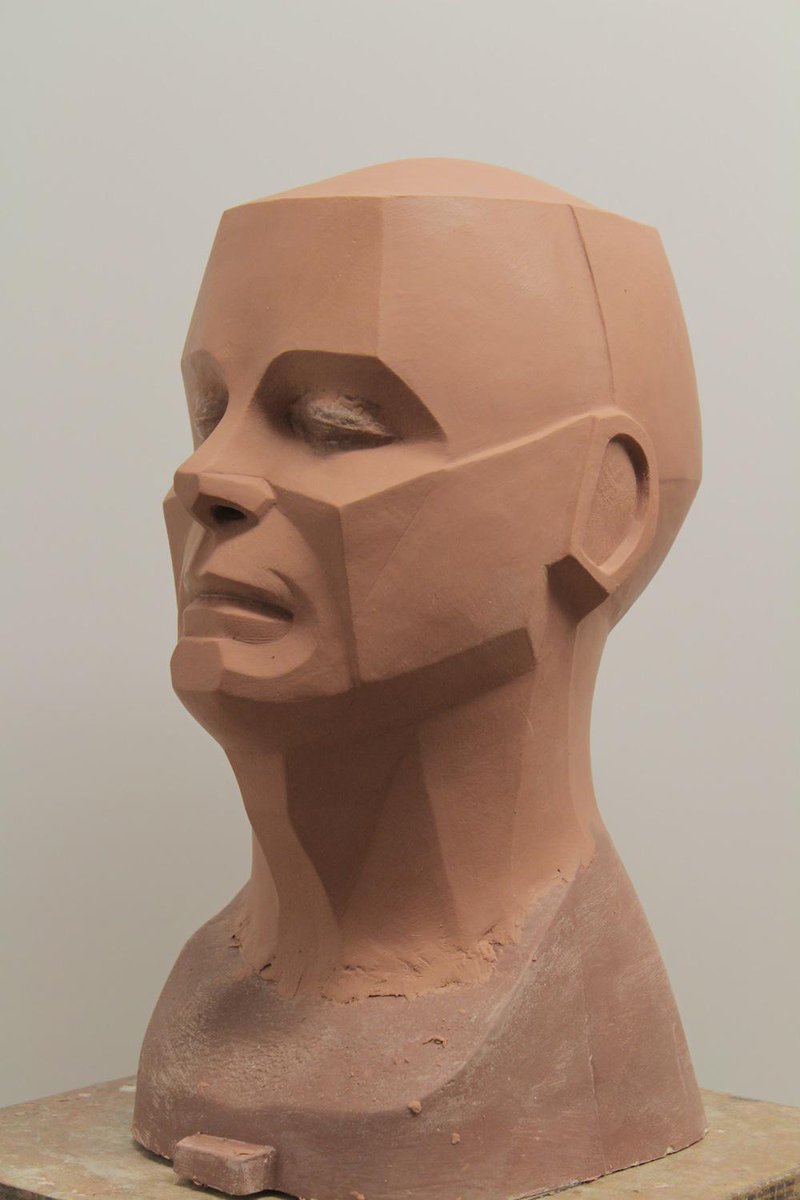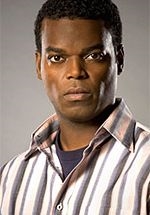It's been a funny week for Doctor Who. Big Finish have announced that, in what's surely the culmination of their gaining the rights to the new series, that David Tennant and Catherine Tate are returning as the Doctor and Donna for a special set of Tenth Doctor audio adventures next year. Meanwhile, in less expected news, Bob Baker is bringing back the Doctor's robot dog in a movie called K-9: Timequake, set for release in 2017. It's set to pit K-9 against the legendary Gallifreyan villain Omega, another character created by Bob Baker and his co-writer Dave Martin. To be honest, I'll be pleasantly surprised if this actually materialises, but it could be wonderfully batty if it does. Before all this, the BBC interrupted its succession of spooky and exciting stories for this idiosyncratic, philosophical and talky episode.
"The Woman Who Lived" is the second half of a sort-of-kinda-two-parter, but is so tonally different to its predecessor "The Girl Who Died" that it's hard to consider it as anything other than a separate story. Not to mention that it takes place eight hundred years later, is written by a different author and one of the previous episode's main characters is almost entirely missing. Catherine Tregenna, having written some of the more emotionally mature and interesting episodes of Torchwood (plus "Meat," but never mind that), is a good choice for this episode, and she excels at giving interesting dialogue to the Doctor and Ashildr - now referred to, and even credited, as "Me." The character's complete inability to remember her original name and barely having any recollection of her life is entirely believable, and equally heartbreaking. There's some fine characterisation here, with Ashildr presented as naive, forthright yet unsure of herself, and immensely likeable, while the centuries older Me is both utterly beaten down and supremely self-confident, yet, at least initially, not very pleasant at all. The parallels with the Doctor are, of course, obvious. That the Doctor refuses to take her with him precisely because they are so similar works perfectly, furthering the notion that he needs a human companion, not a godlike immortal, to keep him focused on the little picture. It's also quite right that he feels guilty for not being there for Ashildr/Me, but never once expresses regret at saving her life, in spite of the consequences.
The first half of the episode is almost a two-hander between Capaldi and Williams, and even with the best writing, couldn't work without their acting talents. As good as Capaldi is, it's Williams who makes this episode, managing the very difficult task of making Me both extremely removed from, and recognisably the same person as, Ashildr. As much as I'm a Clara defender, I didn't miss her in the slightest in this episode. Clara's presence would have overloaded it, when it needed to focus on the relationship, or lack thereof, between Me and the Doctor. (Not me and the Doctor. Me and the Doctor, if you follow.) That said, it's another episode that justifies its later timeslot by being unsuitable for younger children, this time by virtue of being extremely talky and largely uneventful. I like slow-paced television, but it's hard to see many children getting a lot of entertainment from this episode.
Where it falls down is in the material that doesn't focus solely on the Doctor and Me. In spite of being played by the reliably funny comedy actor (and huge Doctor Who fan) Rufus Hound, Sam Swift is a dull and ineffective character. Speaking as a man who adores terrible puns, I can appreciate the joy of ending an episode with a pundown, but the hangman scene fell flat. The jokes needed to be worse! The old ones are the best, as H.P. Lovecraft used to say, but god, that scene needed some original material. The comedy guards and deaf manservant were even less effective, but at least they didn't outstay their welcome. The opening scene was pretty good, but even then, the prevailing thought was "Blackadder did it better." On the adventure side of things, we had some unusually inept action scenes, including a poorly choreographed fight between Me/the Knightmare, and Sam. I realise that bout of fisticuffs was supposed to be inept, but surely it should be watchable. Leandro the lion man was also unispiring, a terribly generic villain who brought little to the story bar an obvious last-minute threat.
Some people have called this episode boring, disliking it for its verbosity and slow-pace. Too much talking, not enough action. For me, though (not Me, but me), it's the opposite. Where "The Woman Who Lived" worked best was in its quiet, dialogue-heavy scenes. I'm looking forward to seeing Maisie Williams's character again, but I'm not too enthused about Sam Swift joining her.
Continuity Corner: The Doctor claims the Great Fire of London was caused by the Terileptils, a reference to the 1982 serial The Visitation, in which the fifth Doctor teamed up with another highwayman, Mr. Richard Mace. He's fibbing a bit, though: it was actually he himself who dropped the torch that started the fire.
He also talks about travelling with another immortal, Captain Jack Harkness, although this is a bit of a stretch. His travels with Jack took place before the Time Agent became immortal, and he promptly dumped him when it happened. This left Jack as a "fixed point in time," a phrase which has since recurred in all manner of scenarios and doesn't seem to mean anything anymore, so it's no surprise we don't hear it applied to Ashildr.
Stargazing: Leandro is from Delta Leonis. Also known as Zosma and Duhr (not the best name, that last one), it represents the hip of the constellation of the lion, and lies around 58 light years away. It's not too different from our Sun, a little bigger and older.
Best line: "What could be worse than losing your children?"
"I keep that entry to remind me not to have any more."
Worst line: "T'is black as night." Hun, it is night.
"The Woman Who Lived" is the second half of a sort-of-kinda-two-parter, but is so tonally different to its predecessor "The Girl Who Died" that it's hard to consider it as anything other than a separate story. Not to mention that it takes place eight hundred years later, is written by a different author and one of the previous episode's main characters is almost entirely missing. Catherine Tregenna, having written some of the more emotionally mature and interesting episodes of Torchwood (plus "Meat," but never mind that), is a good choice for this episode, and she excels at giving interesting dialogue to the Doctor and Ashildr - now referred to, and even credited, as "Me." The character's complete inability to remember her original name and barely having any recollection of her life is entirely believable, and equally heartbreaking. There's some fine characterisation here, with Ashildr presented as naive, forthright yet unsure of herself, and immensely likeable, while the centuries older Me is both utterly beaten down and supremely self-confident, yet, at least initially, not very pleasant at all. The parallels with the Doctor are, of course, obvious. That the Doctor refuses to take her with him precisely because they are so similar works perfectly, furthering the notion that he needs a human companion, not a godlike immortal, to keep him focused on the little picture. It's also quite right that he feels guilty for not being there for Ashildr/Me, but never once expresses regret at saving her life, in spite of the consequences.
The first half of the episode is almost a two-hander between Capaldi and Williams, and even with the best writing, couldn't work without their acting talents. As good as Capaldi is, it's Williams who makes this episode, managing the very difficult task of making Me both extremely removed from, and recognisably the same person as, Ashildr. As much as I'm a Clara defender, I didn't miss her in the slightest in this episode. Clara's presence would have overloaded it, when it needed to focus on the relationship, or lack thereof, between Me and the Doctor. (Not me and the Doctor. Me and the Doctor, if you follow.) That said, it's another episode that justifies its later timeslot by being unsuitable for younger children, this time by virtue of being extremely talky and largely uneventful. I like slow-paced television, but it's hard to see many children getting a lot of entertainment from this episode.
Where it falls down is in the material that doesn't focus solely on the Doctor and Me. In spite of being played by the reliably funny comedy actor (and huge Doctor Who fan) Rufus Hound, Sam Swift is a dull and ineffective character. Speaking as a man who adores terrible puns, I can appreciate the joy of ending an episode with a pundown, but the hangman scene fell flat. The jokes needed to be worse! The old ones are the best, as H.P. Lovecraft used to say, but god, that scene needed some original material. The comedy guards and deaf manservant were even less effective, but at least they didn't outstay their welcome. The opening scene was pretty good, but even then, the prevailing thought was "Blackadder did it better." On the adventure side of things, we had some unusually inept action scenes, including a poorly choreographed fight between Me/the Knightmare, and Sam. I realise that bout of fisticuffs was supposed to be inept, but surely it should be watchable. Leandro the lion man was also unispiring, a terribly generic villain who brought little to the story bar an obvious last-minute threat.
Some people have called this episode boring, disliking it for its verbosity and slow-pace. Too much talking, not enough action. For me, though (not Me, but me), it's the opposite. Where "The Woman Who Lived" worked best was in its quiet, dialogue-heavy scenes. I'm looking forward to seeing Maisie Williams's character again, but I'm not too enthused about Sam Swift joining her.
Continuity Corner: The Doctor claims the Great Fire of London was caused by the Terileptils, a reference to the 1982 serial The Visitation, in which the fifth Doctor teamed up with another highwayman, Mr. Richard Mace. He's fibbing a bit, though: it was actually he himself who dropped the torch that started the fire.
He also talks about travelling with another immortal, Captain Jack Harkness, although this is a bit of a stretch. His travels with Jack took place before the Time Agent became immortal, and he promptly dumped him when it happened. This left Jack as a "fixed point in time," a phrase which has since recurred in all manner of scenarios and doesn't seem to mean anything anymore, so it's no surprise we don't hear it applied to Ashildr.
Stargazing: Leandro is from Delta Leonis. Also known as Zosma and Duhr (not the best name, that last one), it represents the hip of the constellation of the lion, and lies around 58 light years away. It's not too different from our Sun, a little bigger and older.
Best line: "What could be worse than losing your children?"
"I keep that entry to remind me not to have any more."
Worst line: "T'is black as night." Hun, it is night.
 |
| How d'you like them apples? |
